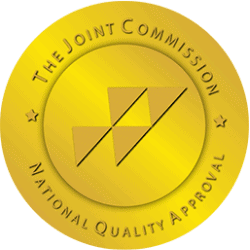Imagine diving into a swimming pool on a hot, sunny, summer’s day. You’ll jump up into the air, point your arms, bend at the waist, and slip into the water with a splash.
Now catalog the dangers of that dive. You could:
- Slip off the board.
- Hit your skull on the bottom of the pool.
- Lose consciousness.
- Have a heart attack.
- Forget how to swim.
All of these issues are serious, but they have one thing in common — they’re all likely to take place either before or just after you start diving.
Let’s continue this experiment.
Think about heroin abuse. Are your risks confined to the second you push the drug into your body, or can they persist long after that moment ends?
If you’re asking yourself these questions, know that it’s wise to get help now. There are no harm-reduction programs that can protect you from every danger. If you’re looking for excuses to support an ongoing heroin habit, treatment is a wise next step.
But if you’ve never tried heroin before, and you’re looking for good reasons to avoid the next hit you’re offered, the information we’ll share here can motivate you. There is no safe level of heroin use. There are serious short- and long-term consequences that stem from even small hits.

Short-Term Heroin Dangers
A typical heroin hit persists for about an hour. You’ll face a variety of serious risks during this period that can have a big impact on your health and happiness.
While heroin is coursing through your body, you can experience:
- Slow, shallow breathing rates. Heroin latches to receptors in the brain stem, says the National Institute on Drug Abuse (NIDA), and it triggers chemical reactors there. Your body struggles to maintain normal body functions, including your breath rate. Your tissues are starved of oxygen. If you don’t start breathing at a normal rate, brain cells can die, and that can leave you in a coma-like state.
- Opioid receptors are scattered along your stomach and intestine. Active heroin molecules latch on, and they trigger changes in your digestion and motility. The shift is sudden, and sometimes, you feel queasy, or you might even vomit.
- Your brain cells are flooded with the chemical dopamine, and typically, that makes you feel happy and secure. But some people experience deep depression instead, and that’s coupled with the desire to do something drastic. If you’re depressed, you might be tempted to take your own life. According to research, close to 40 percent of those with a heroin addiction have attempted suicide at least once.
- Cardiac difficulties. Pure heroin is hard to find. Most drugs are loaded up with talc, herbicides, and other poisons that can move through your veins and into your heart. Seizures, heart attacks, and other cardiac emergencies can take hold during your high, says the American Heart Association.
When your high begins to wane, your troubles won’t end.
People in the midst of a heroin binge have a slow, nodding look to them. It’s easy to spot someone under the influence, and most people know what intoxication looks like. If you’re caught high in public and the police get involved, your troubles can deepen.
Heroin is never legal. It’s even illegal to have paraphernalia (like needles) that have traces of heroin on them. If you’re caught with them — or worse yet, if you’re caught buying the stuff — you could face criminal charges. That could cost you your livelihood or even your freedom.

Long-Term Heroin Risks
While a heroin high might be measured in minutes, the damage done can persist for months. In some cases, it lasts for years.
People who inject heroin face the highest risk of long-term damage. Their decision to use a needle can lead to:
- Blood-borne diseases. Many cities and states ban the sale of needles. Officials hope to curb drug use by making the delivery method difficult to get, but people with addictions respond by sharing their needles. If you do so, you can get diseases like HIV or hepatitis. These conditions can be treated but not cured.
- NIDA says heroin is often cut with substances that don’t dissolve in the bloodstream. Instead, they lodge in tiny blood vessels and cut off the flow of nutrients and the removal of waste. In time, that blocked passage can lead to tissue death and infection. Amputation may be the cure for this problem in the extremities, but if the blocks are in organs like the kidneys, treatment is much more complicated.
- Bacterial organ infections. Needles push bacteria deep beneath the skin, where they can travel to the heart, the lungs, and the liver. Once there, they can multiply and proliferate. Antibiotics can treat the condition, but if left alone for too long, the damage can be permanent.
- Regulating the strength and purity of street heroin is difficult. Take too much, and you can overwhelm the body’s systems. That can lead to death.
Heroin can also spark changes deep within your brain. The flood of chemicals heroin releases is hard for cells to tolerate, and they adjust by growing less sensitive to dopamine and other similar neurotransmitters. If you achieve sobriety, your brain will call for more heroin due to the persistent imbalance.
NIDA also reports that brain cell adjustments caused by heroin can make it hard for you to make decisions, control your behavior, and deal with stress. Your brain just isn’t producing the right chemicals at the proper levels, and this makes you feel frazzled, worried, and distracted almost all the time. You’re at risk for relapsing to heroin use in stressful situations.

Can You Recover?
Heroin abuse causes changes in your brain and your body that stick with you, long after the high is a distant memory. Your use will change you, but you can still have a happy and healthy life.
Experts say it can take up to 20 years and several different types of treatment to truly overcome a persistent heroin habit. You’ll need to give your brain time to heal, and you’ll need to learn habits that support your sobriety in the face of temptation.
Some people need medications to help them through the early stages of recovery. Replacement medications like buprenorphine or methadone help to ease chemical damage in brain cells so you can focus on your therapy. You might use these medications in detox, in rehab, or both.
But your recovery isn’t one big vat of sorrow. You may have months or even years of calm and happiness during bouts of treatment. And with each passing day, you’ll learn more about what you need to stay sober.
It’s a long journey, but for many people, it’s a trip filled with the joy of self-discovery.




